Shenzhou 11th how docking and temple on the second?
Ships with "temple on the second" space laboratory for rendezvous and docking, forming combinations.
The astronauts will work for 30 days. This is by far the longest time a manned flight in China, will also be the last manned SHENZHOU spacecraft prior to the construction of the space station flights.
Space rendezvous and docking technology refers to the rendezvous of two spacecraft in orbit, and even on the structure as a whole technology. It is one of the three basic technologies of manned space activities.
Manned spaceflight three basic technologies
Astronauts ' safe return technology
Warehouse activities in space technology
Space rendezvous and docking technique
Simply put, the two spacecraft rendezvous and docking was "crash", and stick together. This is not a mud wall, rendezvous and docking is very difficult. Just imagine, if two vehicles traveling at high speed on the highway, followed by cars from periods of active rear, chased after the two cars stuck together. Estimates not many older drivers willing to live at home and abroad.
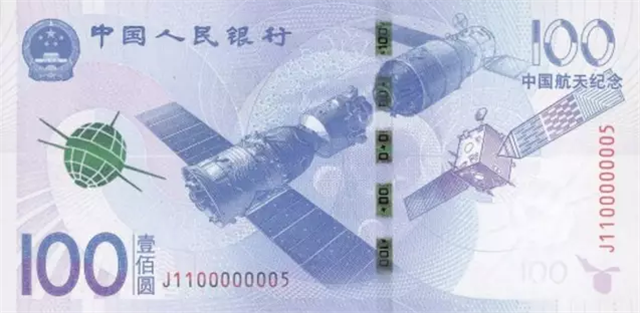 2015 release space commemorative designs for the "Shenzhou" and the "Temple" and docking
2015 release space commemorative designs for the "Shenzhou" and the "Temple" and docking Why is space docking?
Rendezvous and docking of space is of great importance.
First of all, due to limited capacity, not expendable launch large space station completed, only module fired multiple times, each time you add new modules to receive the existing body.
Secondly, the astronauts at the space station, the need for periodic replenishment; for space experiments, carrying experiment equipment. This process is not like delivering newspapers on the ground, placed on a window. Floated outside the station's goods is threatening the station's space junk. Carriage of goods to the space station, docking must be good.
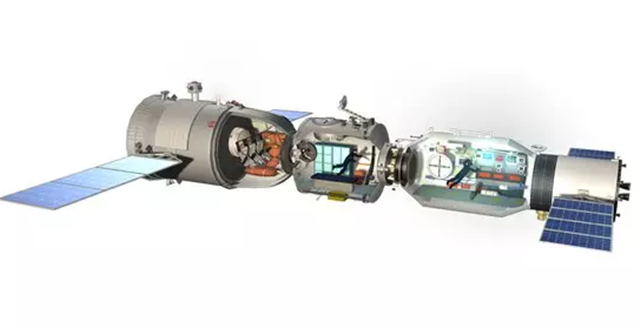 "Progressive" ship and the "peace" occur collisions
"Progressive" ship and the "peace" occur collisionsSpace rendezvous and docking technology is extremely complicated, early docking process often fails, and even accidents. Even in 1997, mature technology Russia still serious butt accident happened: "progressive M3-4" ship and the "peaceful" space station Mir collided, resulting in the station "spectrum" oxygen leak in its tank, damaged the power system, was eventually forced to close.
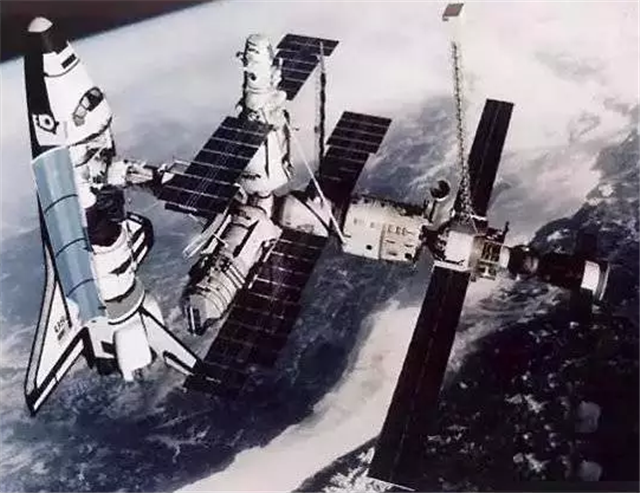
Rendezvous and four control types
Spacecraft rendezvous and docking procedures, must be done by an advanced control system, based on the astronauts and the station's participation, control methods can be divided into the following four types:
Remote control: tracking control of a spacecraft without relying on the astronauts, all implemented by the ground station by telemetry and remote control, global station or relay satellite to assist at this time.
Manual operation: guided by the ground control station, the astronauts in orbit to track spacecraft attitude and orbit, observation and judgment, and hands-on. This is now a more mature approach.
Automatic control: do not depend on astronauts, implemented by a combination of equipment and Earth station on board the spacecraft rendezvous and docking. This method also requires a global station or relay satellite to assist.
Self control: does not depend on the astronauts and the ground station, completely implemented by the equipment on the spacecraft Autonomous Rendezvous and docking.
In essence, these categories can be attributed to manual mode or automatic mode. So far, the United States more manual control mode, and Soviet Union/Russia is using automatic control mode.
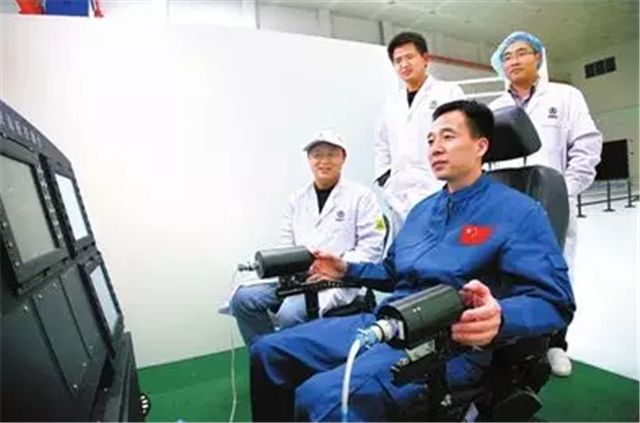 Jing haipeng manual docking training
Jing haipeng manual docking training Advantages of manual control:
Improve the success rate of rendezvous and docking;
Fix errors and troubleshooting rendezvous system in a timely manner;
Save fuel and time.
The advantages of automatic rendezvous and docking:
Does not require complex life-support systems;
High reliability;
Without taking into account safety and life-saving issues.
Future development trend of rendezvous and docking is a combination of control and self-control in order to improve the flexibility, reliability and success of rendezvous and docking.
Space rendezvous and docking technique which home
United States rendezvous and docking technology features:
More than more than 1 connector and dock Agency
More than 2 kinds of rendezvous sensors and
3 manual control mode control
Soviet Union/Russia rendezvous and docking technology features:
1 fast docking flight technology: spacecraft after liftoff, past 2 days preparation time is reduced to less than 6 hours. Such a quick rendezvous and docking mode, is not only a design problem, essentially reflects Russia spacecraft absolute status (orbit and attitude) and advanced level of relative State measuring and control
2 automatic control mode
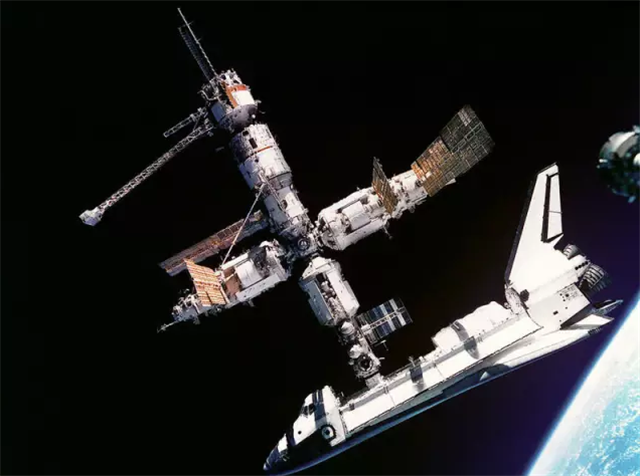 Space shuttle and space station rendezvous and docking
Space shuttle and space station rendezvous and docking China's achievements
Safety: China always places the flight safety system design and flight testing of the first, only simulating manned flight with no passengers there was no security risk cases, implementation of manned space flight. At this early stage, than the Soviet Union did secure, reliable.
Control technology: China rely on independent research and development of rendezvous sensors, GNC system and simulation experiment system, successfully completed the docking mission. Chinese astronauts have world-class levels of manual control, relative attitude control accuracy of up to 1 degree.
Docking: China's independent research and development-oriented flap around in the docking mechanism, connecting mechanism in favour of extended performance is better. Europe and Japan respectively of rendezvous and docking with Russia and the United States of connected institutions, are not developed.
China's gap
Time lag:
* The temple on the first (2011) and Salyut 7th (1982), 29 years;
* God's nine docking (2012) Soyuz-docking (1987), 25 years;
* More cabin space station of the future (2020) than Mir (1986) about 30 years later.
The gap:
* Docking of the space robot arm technology and related technologies;
* Relative navigation sensor (especially the new laser sensor) performance;
* Peripheral docking mechanism;
* In-orbit Assembly of large space station-related technology;
* For the research and development of new technologies and new materials for future space activities;
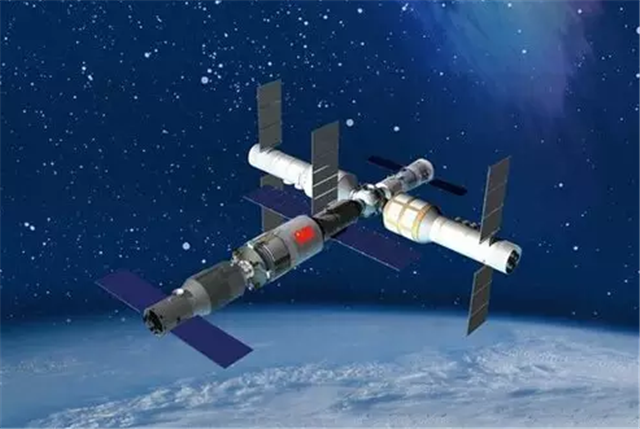 China's space station concept sketch
China's space station concept sketchOn the whole, China and Europe and Japan of rendezvous and docking technology, but compared to the United States and Russia, there are still big gaps. Today and in the future within a few decades, United States and Russia's space technology will lead. Europe and Japan are working to set up an independent manned space system, and in some key technologies of rendezvous and docking up to international standards. Although Europe and Japan has not independently conduct manned space flights, but Europe and Japan in the field of manned space research and development with potential should not be underestimated. The development of China's manned space rendezvous and docking technology, depending on the further growth of the national economy, as well as new technologies (such as connecting mechanism of low impact, high precision laser sensor, new thermal protection materials, and so on) of the independent research and development and innovation.
The aerospace industry is a comprehensive reflection of a country's overall industrial level, many techniques are not separate from each other but interrelated. A similar principle to the barrel, for now, a lot of unilateral technological breakthrough does not bring significant performance increase as a whole. United States under strong economic strength and strong scientific and technological strength, many new ideas you can immediately test, it is estimated that in the future will continue to set the trend for a long time.
(Editors: Biao Guo UN832)
2016-10-16 21:03:34
Integrated
神舟十一号和
天宫二号怎么对接?
飞船将与“天宫二号”空间实验室进行交会对接,形成组合体。
航天员将在此工作生活30天。这将是中国迄今为止时间最长的一次载人飞行,也将是神舟飞船在建造空间站之前的最后一次载人飞行。
空间交会与对接技术是指两个航天器在空间轨道上会合,并在结构上连成一个整体的技术。它是载人航天活动的三大基本技术之一。
载人航天三大基本技术
航天员安全返回技术
空间出仓活动技术
空间交会对接技术
简单说来,交会对接就是两个航天器“追尾”,并粘在一起。这可不是烂泥拍墙上,交会对接的难度是很大的。试想,如果要求两辆车在公路上高速行驶,后面的车在要求的距离段主动追尾,追上以后两辆车粘住一起走。估计国内外找不出几个愿意接活的老司机。
 2015年发行的航天纪念钞主图案为“神舟”与“天宫”的对接
2015年发行的航天纪念钞主图案为“神舟”与“天宫”的对接 为什么要进行空间交会对接?
空间交会对接的意义十分重大。
首先,由于运载能力有限,大型空间站不可能一次性发射完成,只能分模块多次发射,每次将新的模块对接到已有的机体上。
其次,宇航员在空间站生活,需要定期补充物资;欲进行空间实验,也要运载试验设备等。这个过程可不像在地面送报纸,放在窗户上即可。飘在空间站外的货物其实是威胁空间站的太空垃圾。给空间站运载货物,必须对接好进行。
 “进步”飞船与“和平”号发生碰撞
“进步”飞船与“和平”号发生碰撞 空间交会对接技术很复杂,早期的对接过程经常发生故障,甚至出现事故。即使在1997年,技术成熟的俄罗斯仍然发生过一起严重的对接事故:“进步M3-4”飞船与“和平”号空间站相撞,造成了空间站“光谱”号舱内氧气泄漏,动力系统损坏,最终被迫关闭。

交会对接四种控制类型
航天器空间交会对接过程,必须由高级控制系统来完成,根据航天员及地面站的参与程度,可将控制方式划分为如下四种类型:
遥控操作:追踪航天器的控制不依靠航天员,全部由地面站通过遥测和遥控来实现,此时要求全球设站或者有中继卫星协助。
手动操作:在地面测控站的指导下,航天员在轨道上对追踪航天器的姿态和轨道进行观察和判断,然后动手操作。这是目前比较成熟的方法。
自动控制:不依靠航天员,由航天器上设备和地面站相结合实现交会与对接。该控制方法也要求全球设站或有中继卫星协助。
自主控制:不依靠航天员与地面站,完全由航天器上设备自主实现交会与对接。
从本质上说,上述分类可归结为人工控制方式或自动控制方式。迄今为止,美国较多地应用人工控制方式,而苏联/俄罗斯则主要采用自动控制方式。
 景海鹏进行手控交会对接训练
景海鹏进行手控交会对接训练 人工控制的优点:
提高交会与对接的成功率;
及时修正交会系统中的错误和排除故障;
节省燃料和时间。
自控交会与对接的优点:
不需要复杂的生命保障系统;
可靠性高;
无需考虑人员的安全和救生问题。
交会与对接未来的发展趋势是人控和自控相结合,以提高交会与对接的灵活性、可靠性和成功率。
空间交会对接技术哪家强
美国交会对接技术特点:
1 多种连接机构和停靠机构
2 多种交会敏感器并用
3 手动控制为主的控制模式
苏联/俄罗斯交会对接技术特点:
1 快速交会对接飞行技术:航天器升空后,将以往2天的准备时间缩短到6小时以内。这种快速交会对接模式,不仅是轨道设计问题,更本质地折射出俄罗斯在航天器绝对状态(轨道与姿态)与相对状态的测量与控制方面的先进水平
2 自动控制为主的控制模式
 航天飞机与空间站交会对接
航天飞机与空间站交会对接 中国的成就
安全性:中国始终将飞行安全性置于系统设计与飞行试验的首位,只有在无乘员的模拟载人飞行不存在任何安全隐患的情况下,才实施载人飞行。在这一初期阶段,中国比苏联做得安全、可靠。
控制技术:中国依靠自主研发的交会敏感器,GNC系统与地面模拟实验系统,成功完成了交会对接任务。中国航天员具有世界一流的手动控制水平,相对姿态的控制精度高达1度。
对接机构:中国自主研发的导向瓣内翻式周边对接机构,有利于扩展性能更好的连接机构。欧洲和日本的交会对接分别使用俄罗斯与美国的连接机构,都不是自主研发的。
中国的差距
时间滞后:
*天宫一号(2011)比和礼炮7号(1982)晚29年;
*神九对接(2012)比联盟号对接(1987)晚25年;
*未来的多舱空间站(2020)比和平号(1986)晚约30年。
技术的差距:
*空间自动臂技术以及相关的停靠技术;
*相对导航敏感器(特别是新型激光敏感器)的性能;
*周边对接机构的性能;
*在轨组装大型空间站的相关技术;
*面向未来空间活动的新技术与新材料的研发力度;
 中国空间站构思示意图
中国空间站构思示意图 总体上,中国与欧洲及日本的交会对接技术水平相当;但相比美俄,仍有比较大的差距。当前以及未来几十年内,美国与俄罗斯的航天技术仍将处于领先地位。欧洲与日本正在努力建立独立的载人航天体系,且在交会对接的某些关键技术方面达到世界水平。虽然欧洲与日本还没有独立地进行载人空间飞行,但欧、日在载人航天领域的研发力度与潜在实力不容低估。中国载人航天及其交会对接技术的发展,主要取决于国民经济的进一步增长,以及新技术(如弱冲击连接机构,高精度激光敏感器,新型热防护材料等)的自主研发与创新。
航天工业是一个国家整体工业水平的综合体现,很多技术不是彼此分离,而是互相牵连的。类似于木桶原理,目前来看,很多单方面的技术突破并不能为整体性能带来显著提升。美国在强大的经济实力和雄厚的科技实力下,很多新的想法可以立即试验,估计在未来很长时间内还会继续引领潮流。
(责任编辑:郭彪 UN832)
2016-10-16 21:03:34
综合